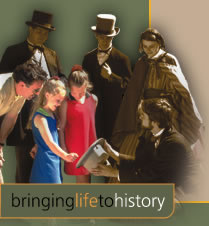Place Description
The Summerside United Baptist Church is a wood framed building located on the northeast corner of the Spring and Church Streets intersection. It features round arch Romanesque Revival style windows and a steeply pitched gable roof and a square side entrance tower. The exterior is white with the lower portions in wide shingles and upper portions in decorative cedar shingles. The building footprint includes hall additions to the north and northeast. The registration includes the building and parcel.
Why is this place important?
The Summerside United Baptist Church has heritage value as one of several Summerside churches that have graced the downtown area for more than a hundred years. It is the second Baptist Church building to be erected on the northeast corner of Spring and Church Streets, the original structure having burned in the Great Fire of 1906. It is also significant as an example of a church designed by local architect, George E. Baker.
The congregation had its beginnings in 1868 and the date of construction of the first church building is estimated to have been sometime between 1870 and 1873. Just after the turn of the century, some major remodelling was done and the debt was only partially paid down when the Great Fire of 1906 swept across the town destroying the church along with over a hundred other buildings.
The congregation was then invited to use the Epworth League Hall owned by the Methodists, in order to hold their weekly services. In March 1907, tenders were called for a new church, based on plans drawn by local architect, George E. Baker, who had prepared them at no charge. M.F. Schurman and Company had the frame in place by July.
Construction proceeded throughout the summer and by December the building was ready for an official opening. Its interior design was typical of the Akron plan which had originated in churches in Ohio. A local newspaper of the day commented on the features of the new church: "The style of the building is Romanesque and the Romanesque idea is faultlessly carried out both in the exterior and interior finish; the windows are fitted with leaded cathedral glass; the main auditorium, 48 by 33 feet, has three rows of circular seats, and is overarched with a ceiling of clear white spruce divided into panels with heavy ribbed moulding; the inside finish is of cypress with an ash wainscotting. The platform is arched as to give excellent acoustic advantages. Connected with the main auditorium are two large rooms one above the other which can be thrown open so as to extend the auditorium. These rooms will also be used for Sunday School classes, prayer meetings, social gathering, etc." The dedication took place on Sunday, December 22, 1907.
The membership of the church grew rapidly with the arrival of Rev. A.K. Herman in 1919. An increasing number of children enrolled in Sunday School and the establishment of a Baptist Young Peoples Union in 1921 led to the need for a church hall. George E. Baker also designed the addition to be erected on the north side of the church and work began in May 1924. Charles Ramsay was given the contract for the two storey structure which opened in October of that year.
The next major change to the church came in 1949 with the addition of a two storey hall measuring 44 by 72 feet. According to a local newspaper: "Excavating operations for the new Baptist Hall in Summerside were begun Friday at the rear of the present Sunday School hall... with the Masonic Hall located in the upper portion and the ground floor to be used as an auditorium... The new hall when completed will fill a long felt want in the Baptist activities, as the present Sunday School rooms were much too small to meet requirements..."
In 1968, the congregation celebrated its 100th anniversary. The congregation of the Summerside Baptist Church remains vibrant and the church building is an attractive landmark in an early residential section of Summerside.
Source: City of Summerside, Heritage Property Profile
Special Characteristics
The Romanesque Revival heritage value of the church is shown in the following character-defining elements:
- the massing and form of the church built upon the footprint of the original church which burned in 1906
- the large steeply pitched gable roof with asphalt shingles
- the brick foundation and a single chimney located on the east elevation
- the large round arch windows on the east and west elevations
- the arched windows in the east and west transepts with caps
- the large multi-paned arched window in the south elevation with cap
- the semi-circular chancel extension off the north elevation with alternating shingle pattern
- the addition of two halls, both set back to the rear and away from the street; the first being a storey and a half directly to the north of the main church, while the second is a large eastern extension, of two storeys, including a gymnasium located to the east of the first hall
- the square tower located on the west elevation inset from the southwest corner and containing the original main entrance, double doorway
- the Italianate windows of the tower and the triangular pediments with louvred vents
- the wooden finial on the top of the tower
- the dentils below the skirting which mark the transition from the first floor to the second floor of the tower and there are large modallions under the eaves around the building
- the decorative mouldings surmounting the windows






